LINKS OF THE WEEK: Feb 12, 2024
Interesting stats on EVs and energy use in the US, developments in wind and tidal power, a plastic recycling microfactory, and an "unprecedented collapse" in EU fossil fuel generation.
A glimpse into what getting around town might look like in the decades ahead.

I did something kind of crazy the other day.
I hopped on a plane down to San Francisco to check out the two-day Micromobility America exposition that took place October 19-20 in Richmond, California, across the bay from downtown San Francisco.
I’ve never attended any kind of tech-related trade show before – but I have been low-key obsessed with the idea of micromobility for a few years now (my family and I all own ebikes and they tend to be our primary form of transportation for most of the year). And as a freelance writer looking for interesting green tech stories and industry connections that could lead to clients for my day job as a copywriter, I figured the event would be a good way to accomplish both adjectives.
Plus I just really wanted to geek out in person over some of the crazy vehicles I’d seen online. 😆 And the opportunity to talk to people in the industry about their thoughts on how ebikes, escooters, and other small micromobility vehicles might evolve to serve our transportation needs in the years to come was impossible to resist.
My first night there, I discovered that my hotel was two doors down from a very cool sports bar that served the most delicious beer I’ve ever tasted in my life. NO exaggeration.

(I also discovered that my 108-year old hotel is apparently a regular stop on San Francisco ghost tours – something I found out only after checking in, when some weird tapping noises on the wall that made me wonder, hmm… and do some googling. 😆)
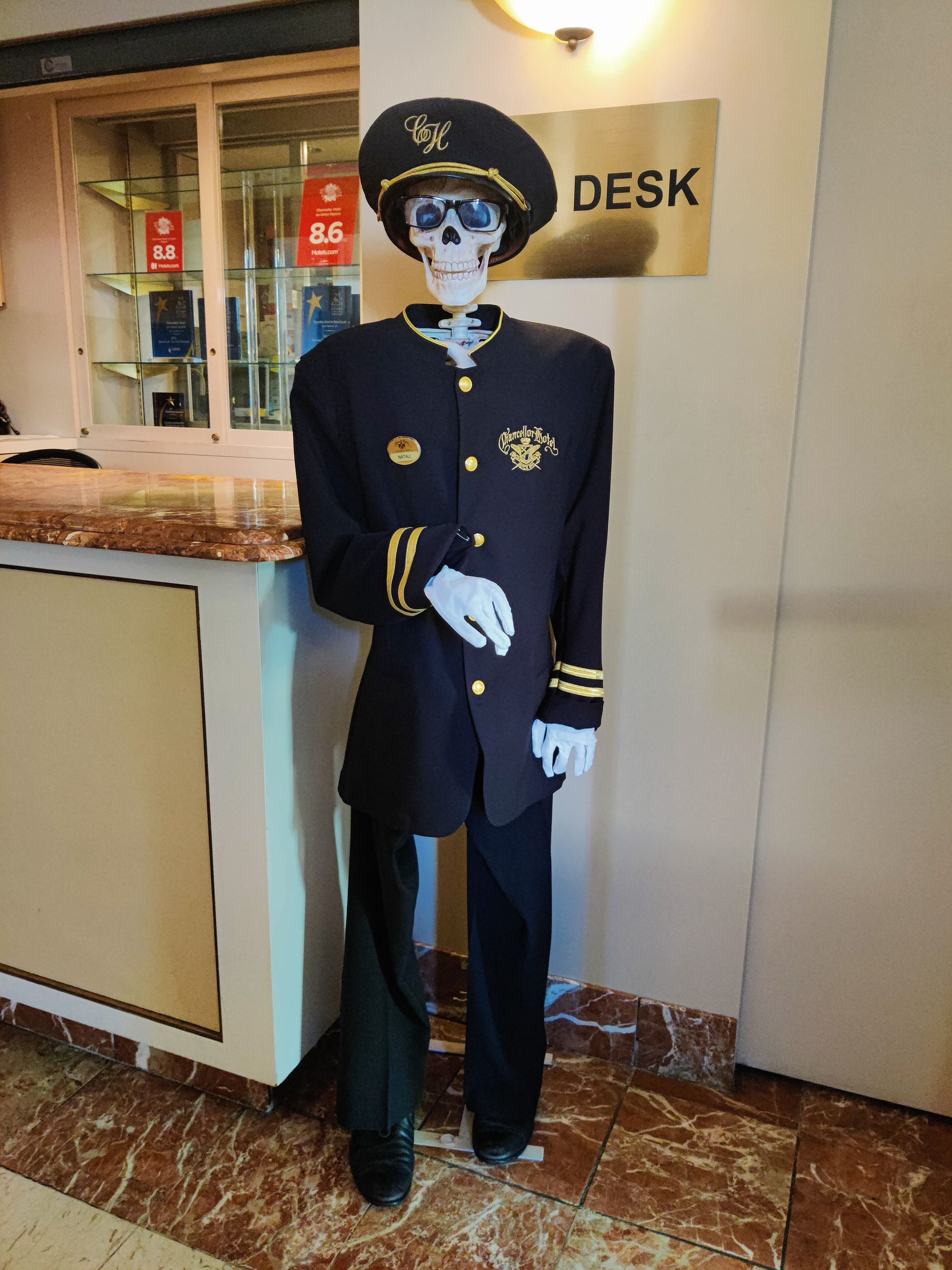
The next day I walked through downtown to the San Francisco ferry terminal, where I hopped on a passenger ferry that took us across the bay directly to the Craneway Pavilion where the event was being held.

I spent the first part of the morning examining all of the vehicles on display and taking pictures before more people showed up.
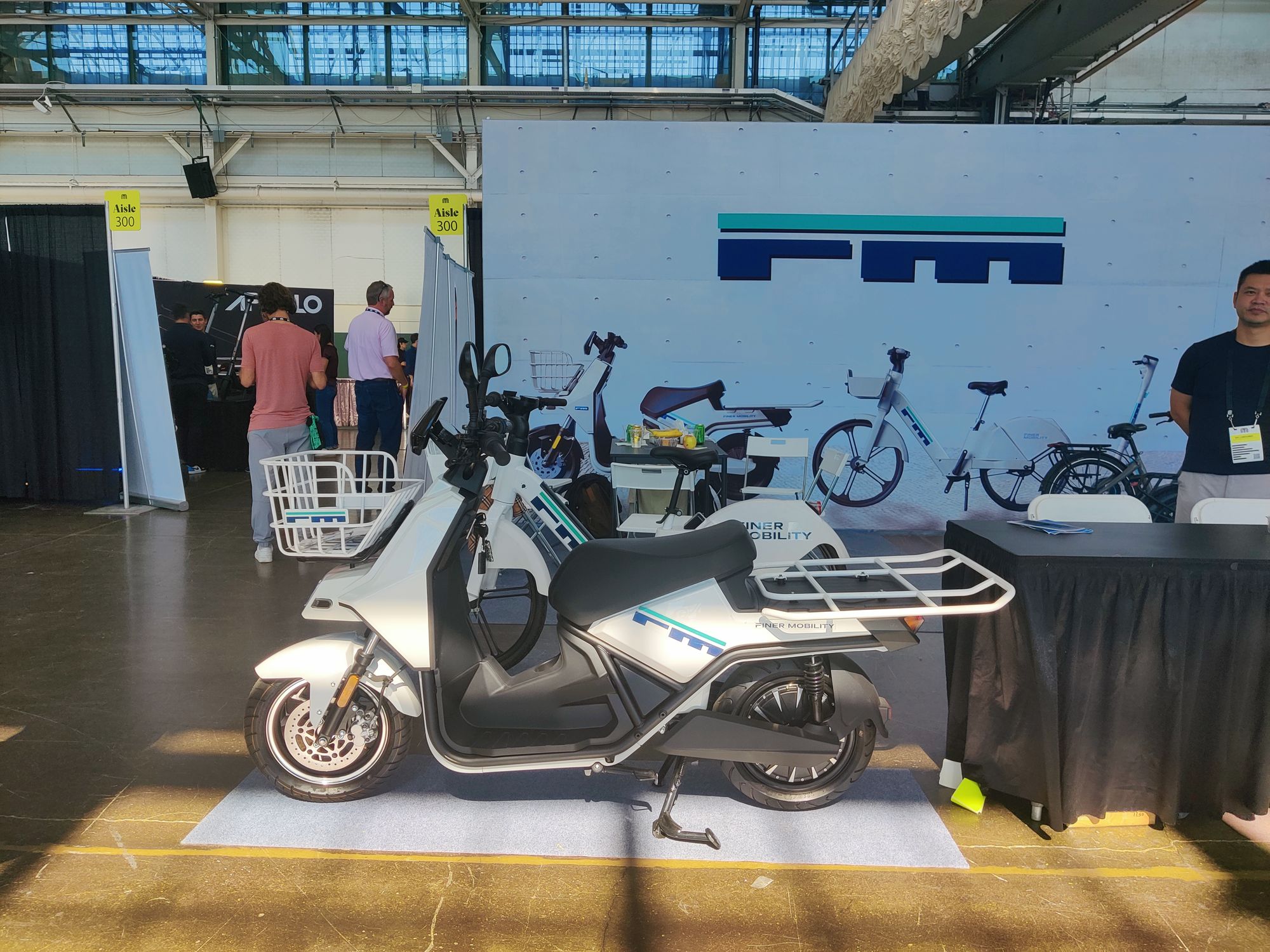

As you might expect, there were a lot of companies featuring recreational pedal-assist style ebikes.



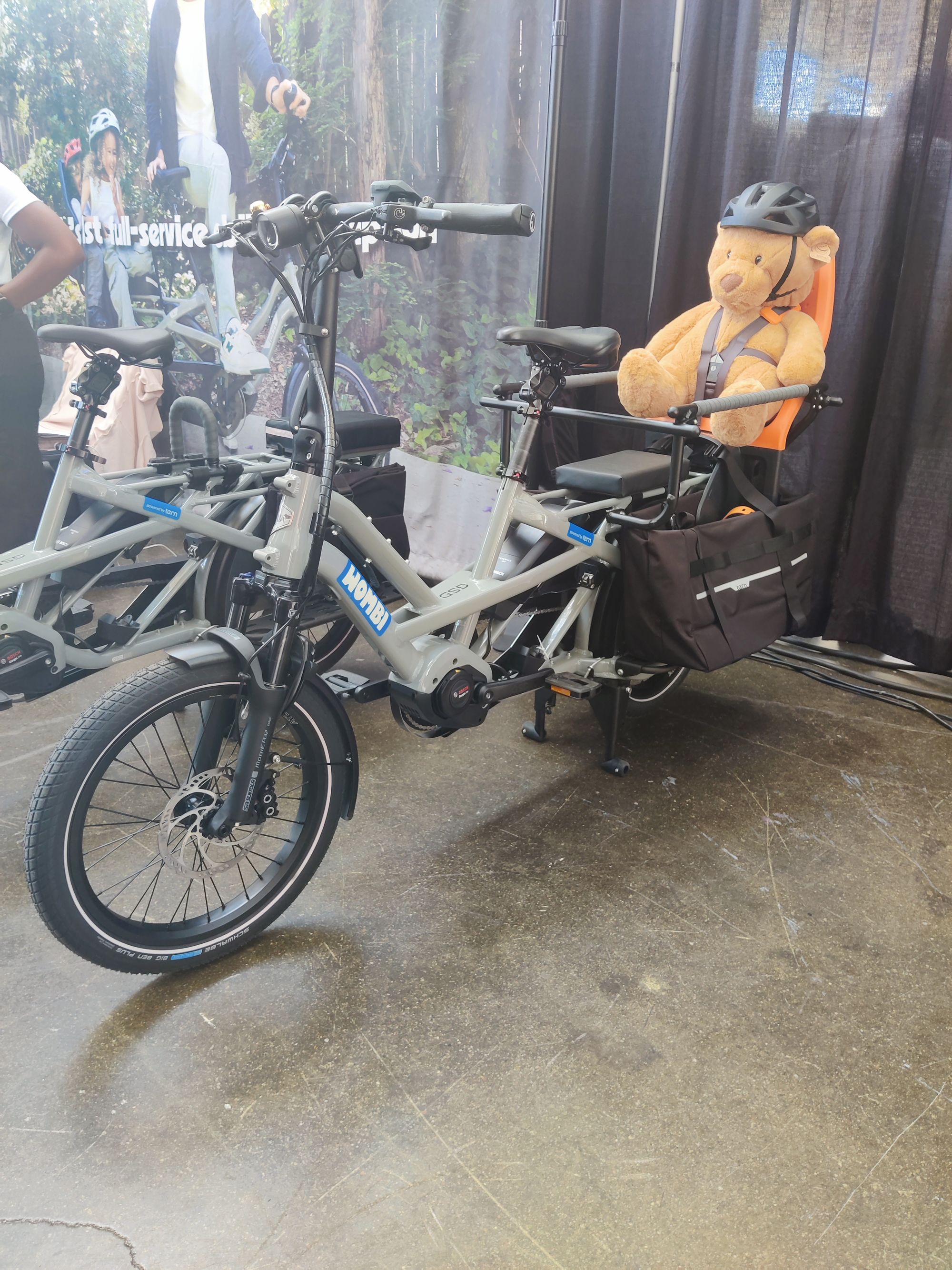

Wombi kid carrier ebike and EOVolt foldable ebike (the smallest I saw there)
The company Lectric seemed to be one of the main exhibitors and I got the impression from the people I talked to that they were well liked and respected within the industry.
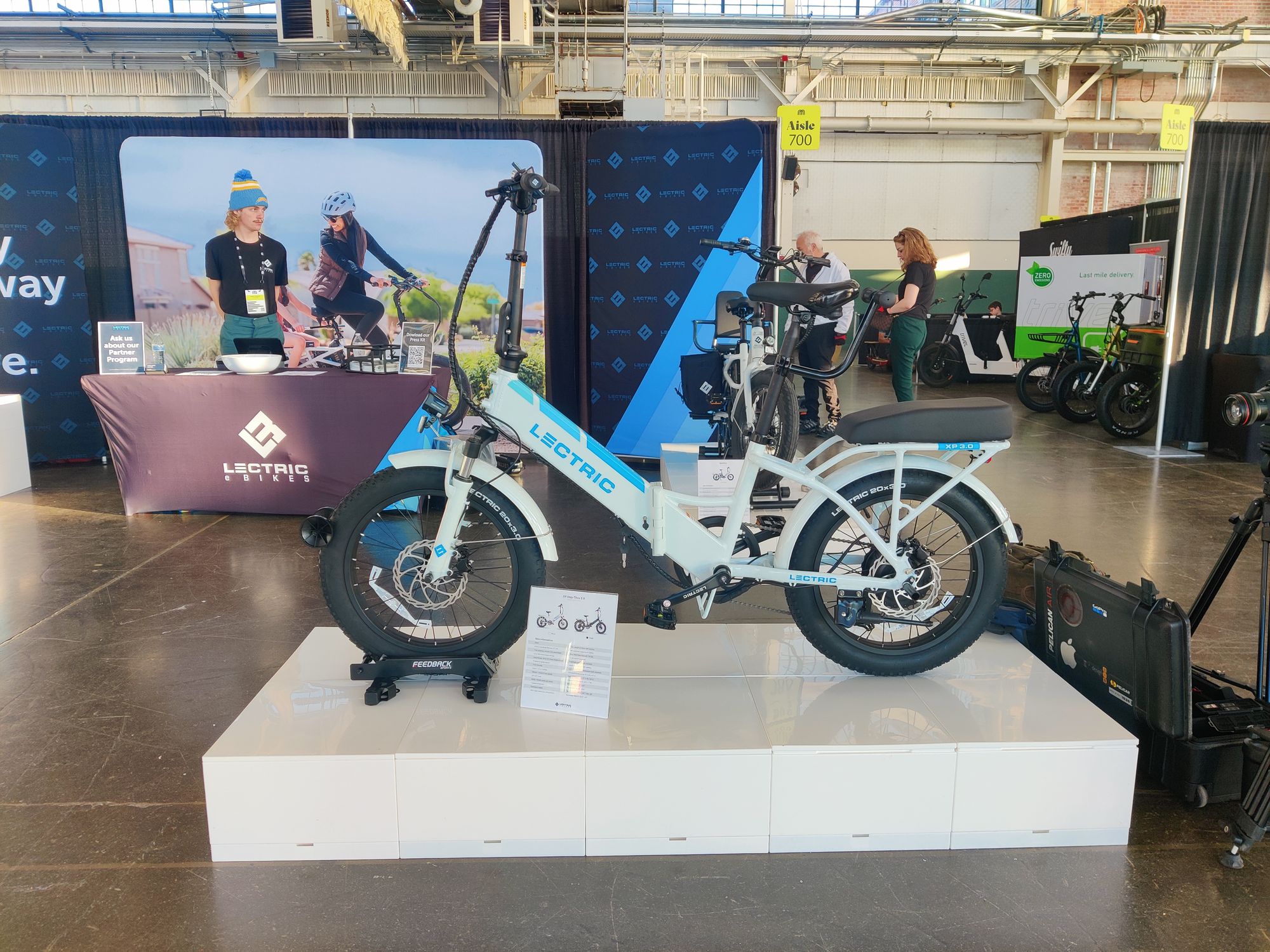

There were also a lot of electric kick scooters on display. Some of the exhibitors were clearly targeting individual users while others seemed to be focusing more on presenting their scooters as community ride-share vehicles.

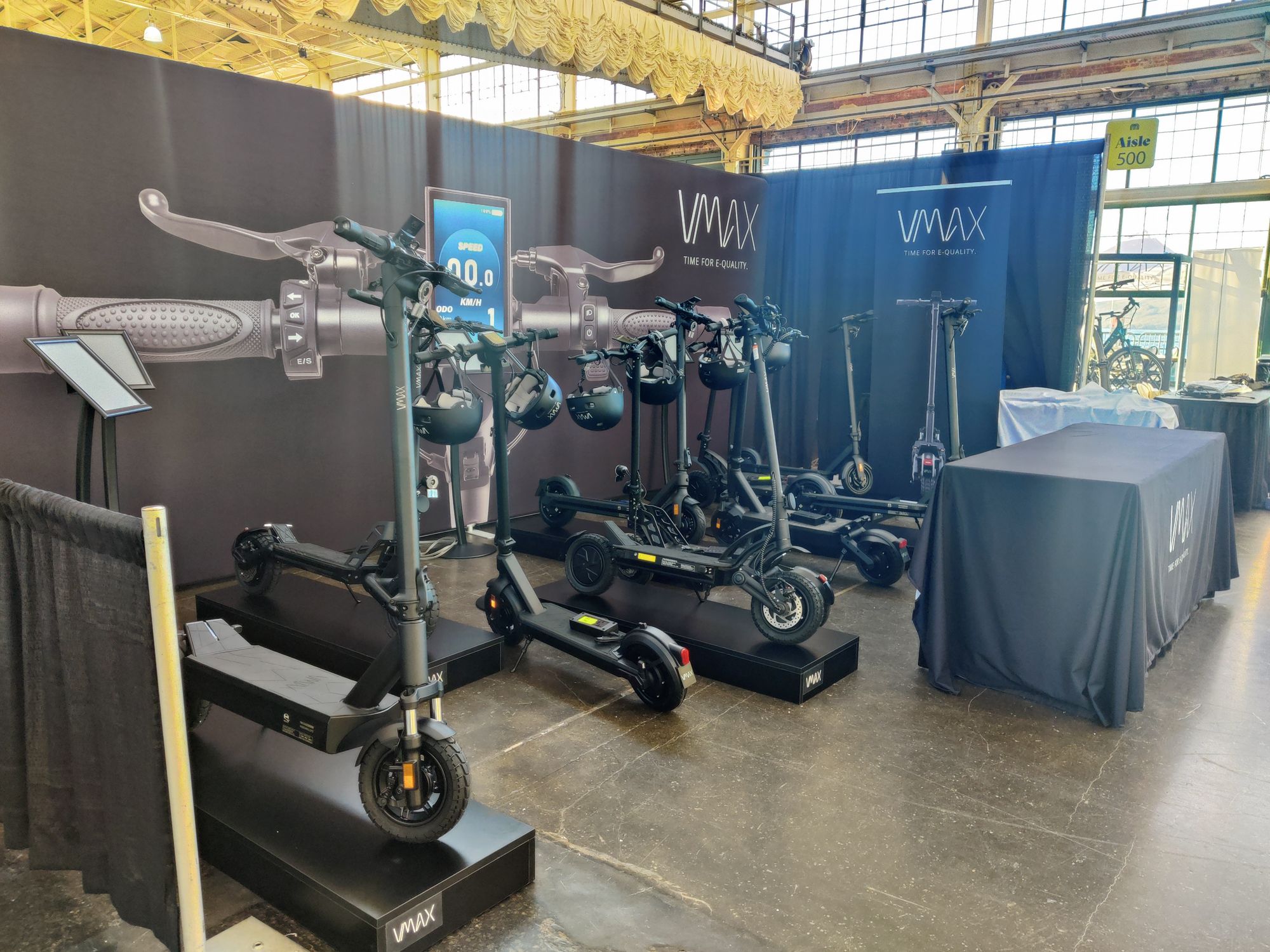
The company that ended up winning the event’s “Best Pitch” award was Swifty, a scooter company out of the UK, whose "Swifty Go" scooters have 16-inch wheels that people seemed to really like (maybe because they provide for a more solid-feeling ride?) and whose business plan the judges really liked.
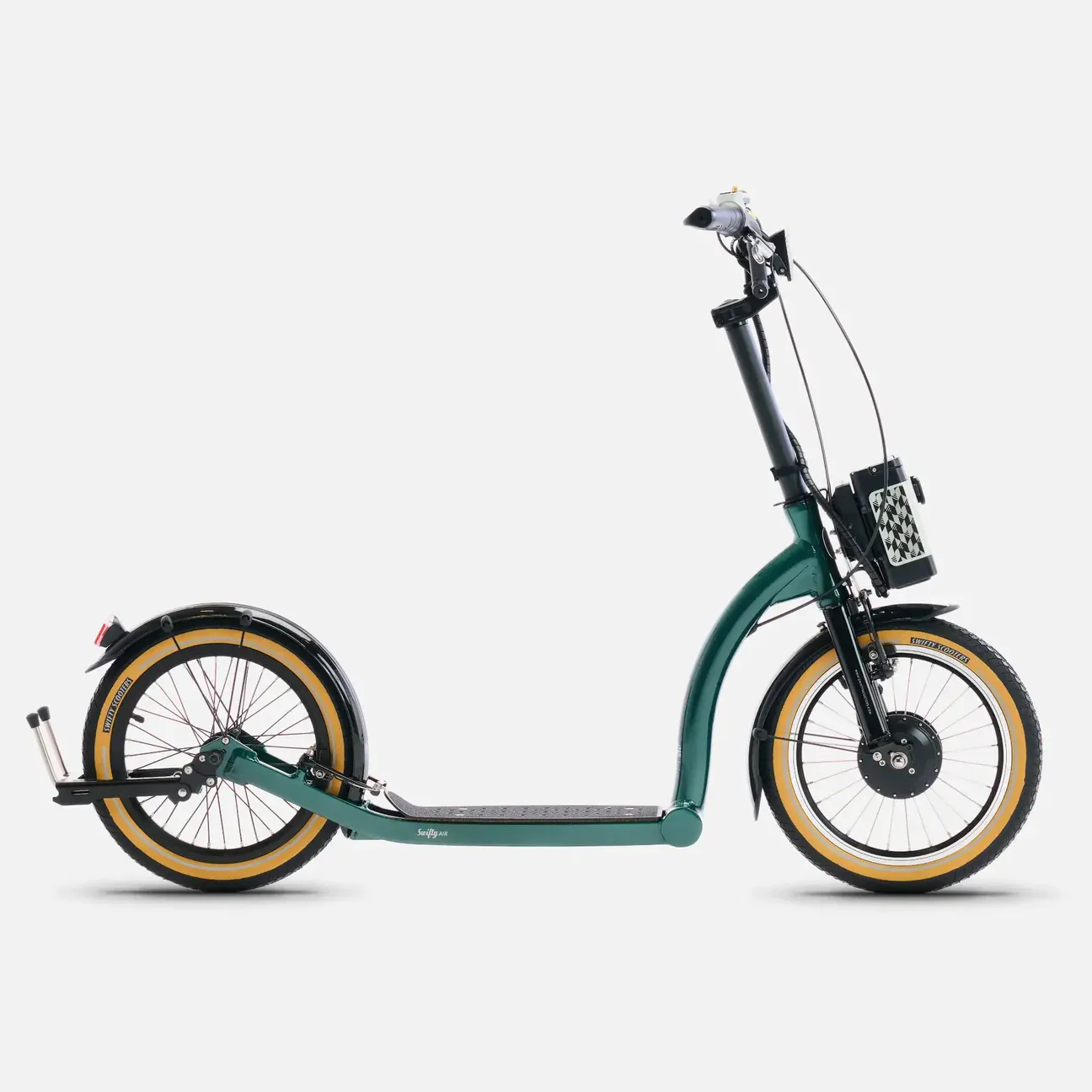
There were also a fair number of differently shaped cargo vehicles.



As well as a number of intriguing “mini-car” style urban transport vehicles.



Plus there were a few cool-looking electric motorcycles on display.


The bike in the above photo was one of the vehicles that (based on the people I talked to) had the most buzz around it. Cleveland, Ohio-based LAND ENERGY makes the District street cycle and District Scrambler street + off-road bike (seen above), both of which have three different modes of travel: ebike, e-moped, and e-motorcycle, so riders can set the max speed for each mode to ensure maximum safety and battery efficiency. The attendees I heard speaking positively about these bikes said they really loved the quality of the ride and how the bike "felt" more like a regular motorcycle. I thought their battery system looked very cool and loved how easy it was to pull out the batteries and swap them out with fresh ones.
In addition to the 60-70 exhibitors (many of whom seemed to be startups that had either just started selling or were taking pre-orders for their vehicles), the event had about 1500 attendees and 100 panelists and speakers, including government officials, clean-tech non-profit organization representatives, tech writers, and leaders in sustainable transportation.
There were also a number of companies offering software solutions to help support the growth of micromobility use in urban centres.
Joyride, for example, is a Canadian company that creates a white-label software app that micromobility companies use to run their business and help their users find vehicles and drop-off stations and navigate their ride. In their branding, the company says their partners "have clocked millions of miles across 200+ markets and five continents."
I thought Berlin-based company Swobbee had a really interesting business model. They build, set up, and maintain battery exchange stations in urban environments that enable ebike or e-moped/e-motorcyle users to easily swap out their spent batteries for fresh ones as they travel around town. My guess is such technology works best for ride share fleets and delivery ebikes as opposed to individual riders right now, but I can see a future where all EV users have the option of belonging to battery sharing co-ops using this kind of system.
Finally, I also had a great time chatting with CEO Tayler Childers of BikeWise, a Paris-based company that officially launched their new online components sharing platform on the first day of the event. Their app makes it easier for companies, bike repair shops, and individual users to find the components they need to keep their bikes running. I appreciate their company’s mission of wanting to keep bike components out of landfills as much as possible – as well as tracking existing components to maximize their use and make it easier to reclaim and recycle them at their end of life. Doing more with less FTW!
So! There's my overview of what kind of vehicles were there as well as some of the different types of software companies I noticed.
In terms of the themes and comments that repeatedly came up during the panel discussions and general conversations I heard at the event, here are my key takeaways:
It's important to remember that increasing the diversity of the transportation landscape gives people more options, not fewer. It doesn't limit our freedom or ability to travel, it increases them by giving us more options to get around that don't require us to sit in annoying traffic jams surrounded by other single-passenger SUVs or endlessly circle neighbourhoods in search of a stupidly expensive parking spot. More people choosing to go by bike instead of car means fewer cars on the road for all the other drivers to tell with. Everybody wins!
Okay! That's it for Part 1 of my Micromobility America recap, which hopefully has given you a decent overview of the different kinds of vehicles that were on display as well as a sense of the topics being discussed at the event.
In Part 2, I’ll introduce you to some of the people I met and the conversations we had about the challenges and opportunities involved in encouraging micromobility use and transitioning to a more climate-friendly, people-centric transportation model.
This includes chats I had with Sarah Goodyear, co-host of the podcast, The War on Cars, and John Shribbs from Petaluma, California, a city that's done an amazing job of building bike- and pedestrian-friendly infrastructure that prioritizes people and nature over cars.
If you know of anyone else who might find this information interesting, please feel free to share – and if you haven't already done so, be sure to subscribe for free at the bottom of this page so you never miss an article!✌️